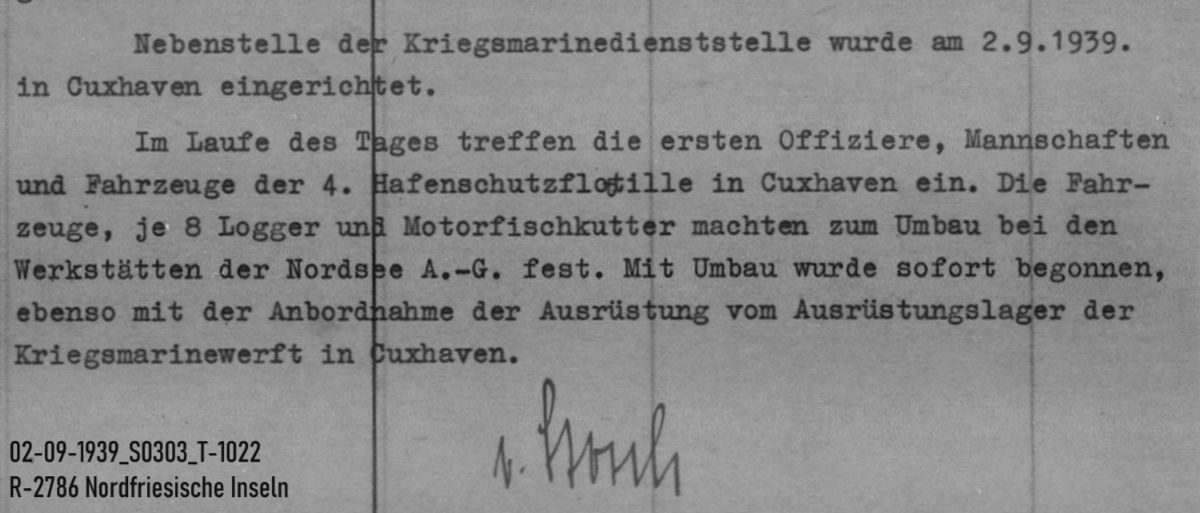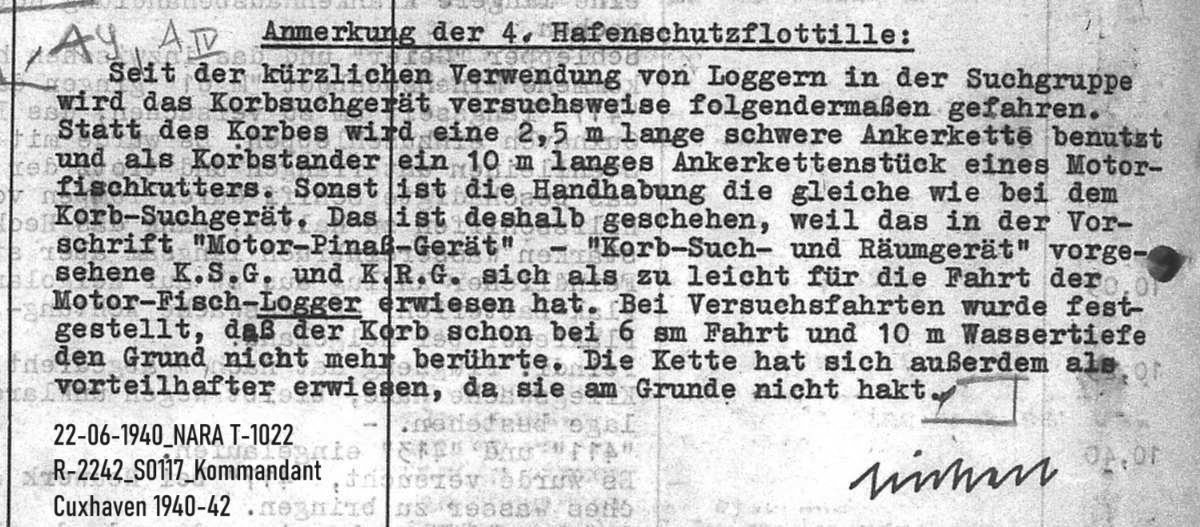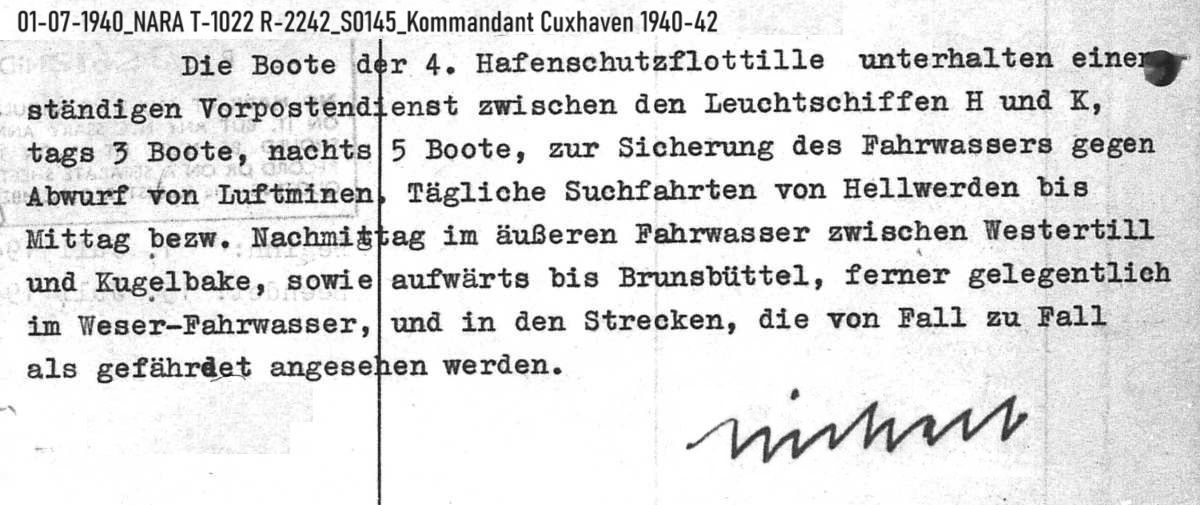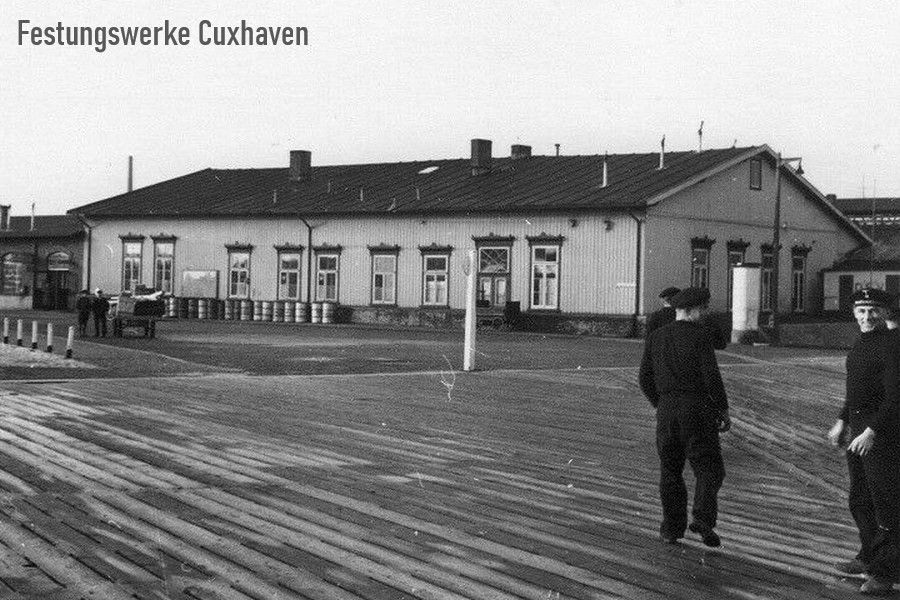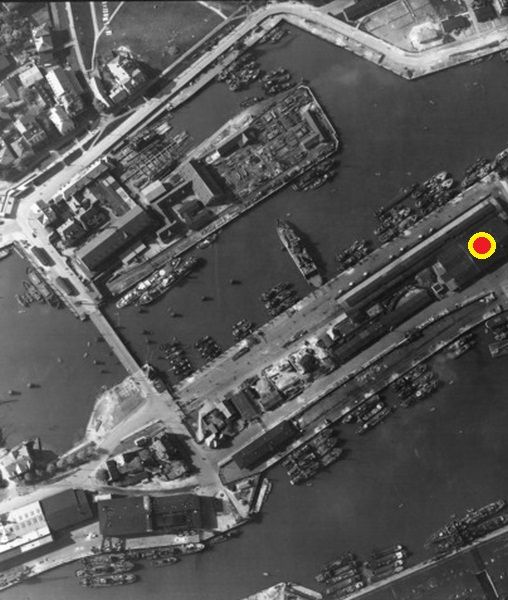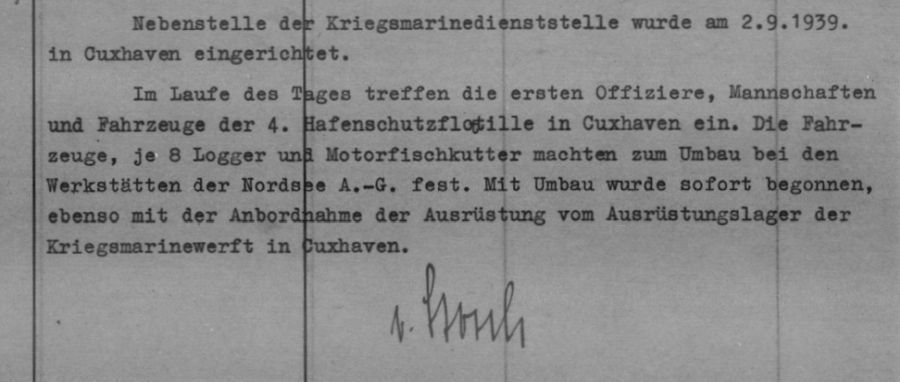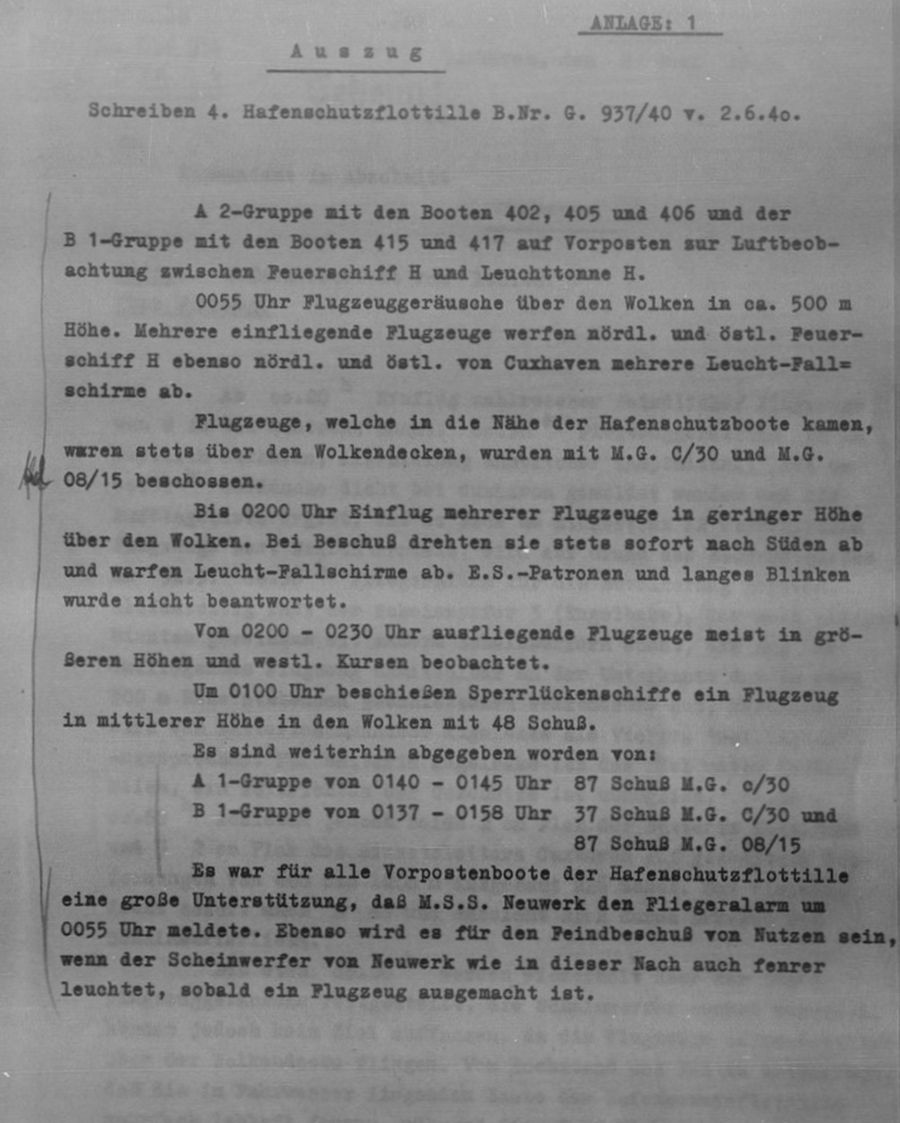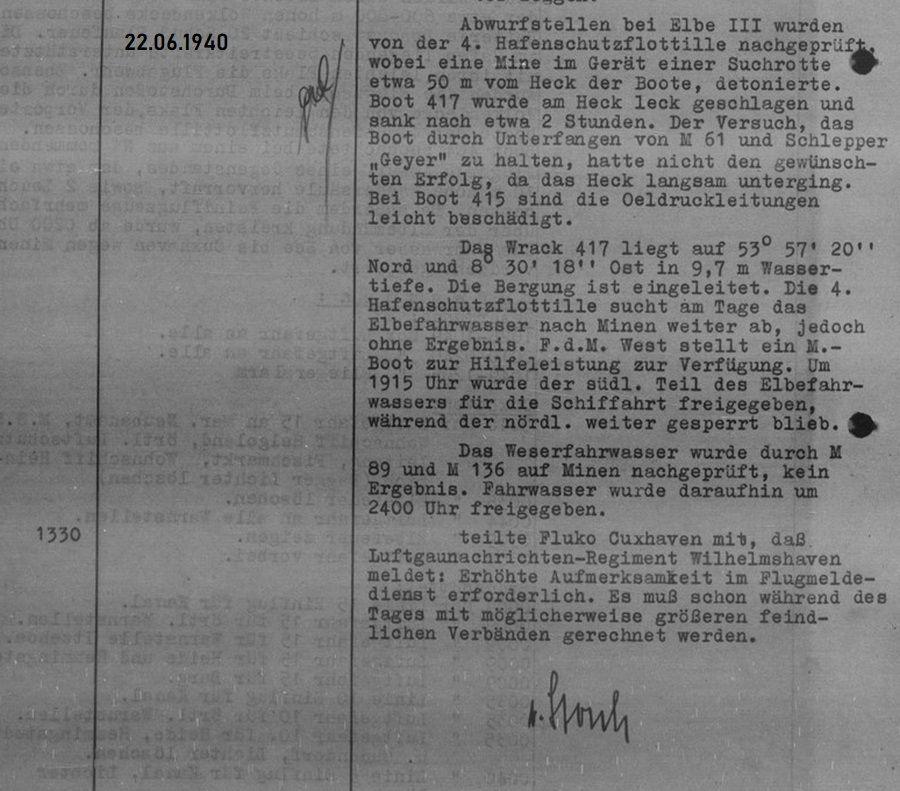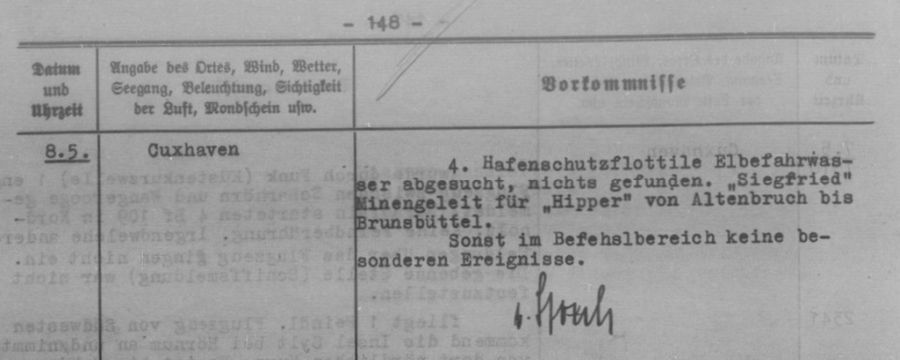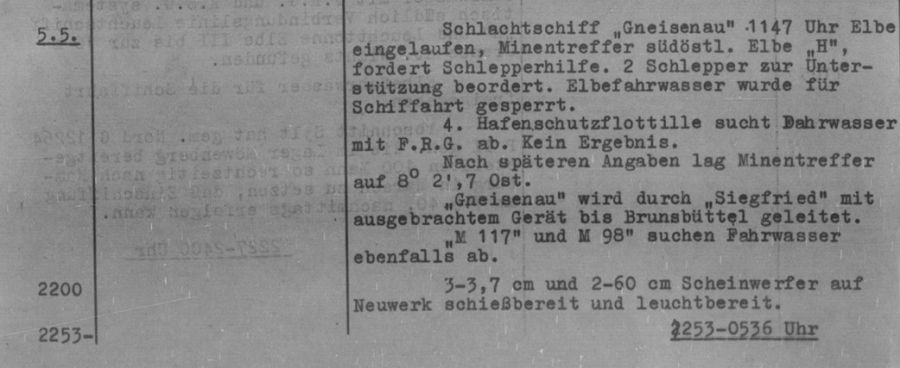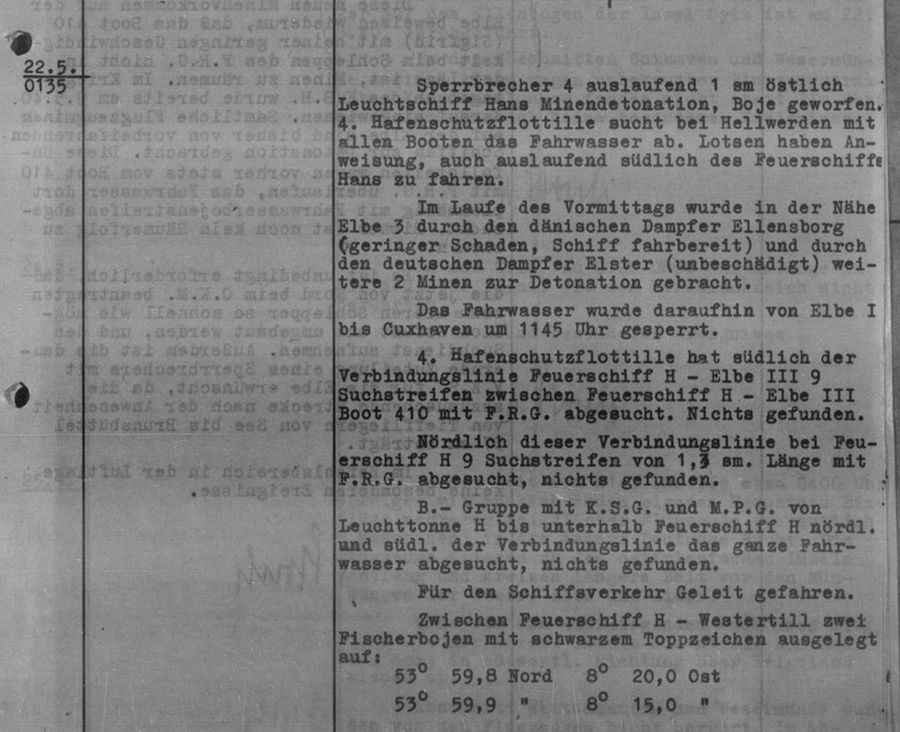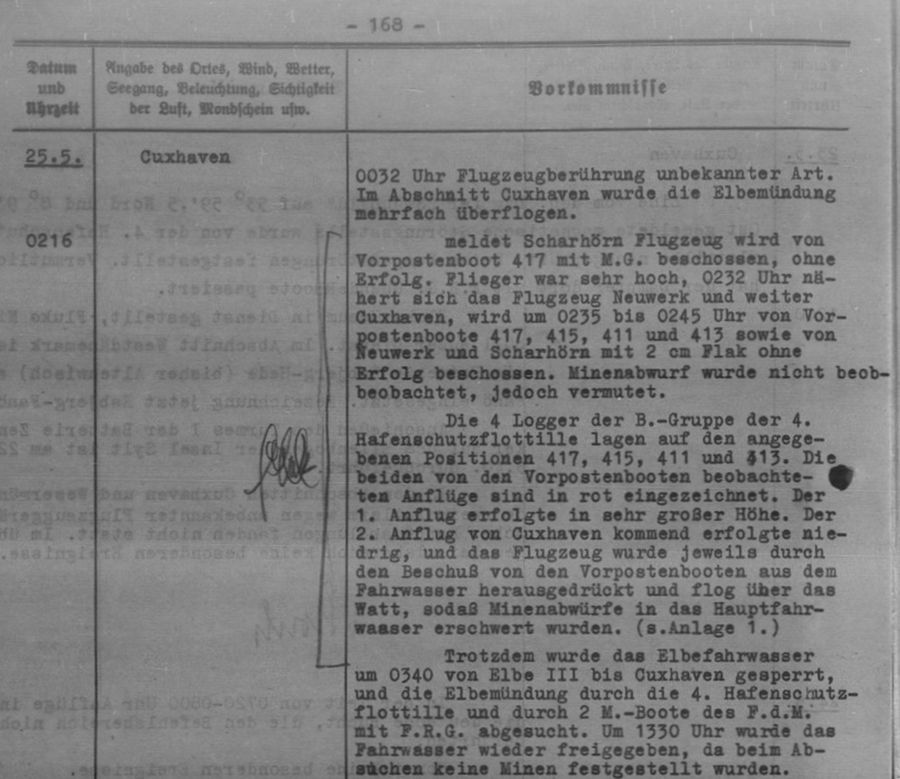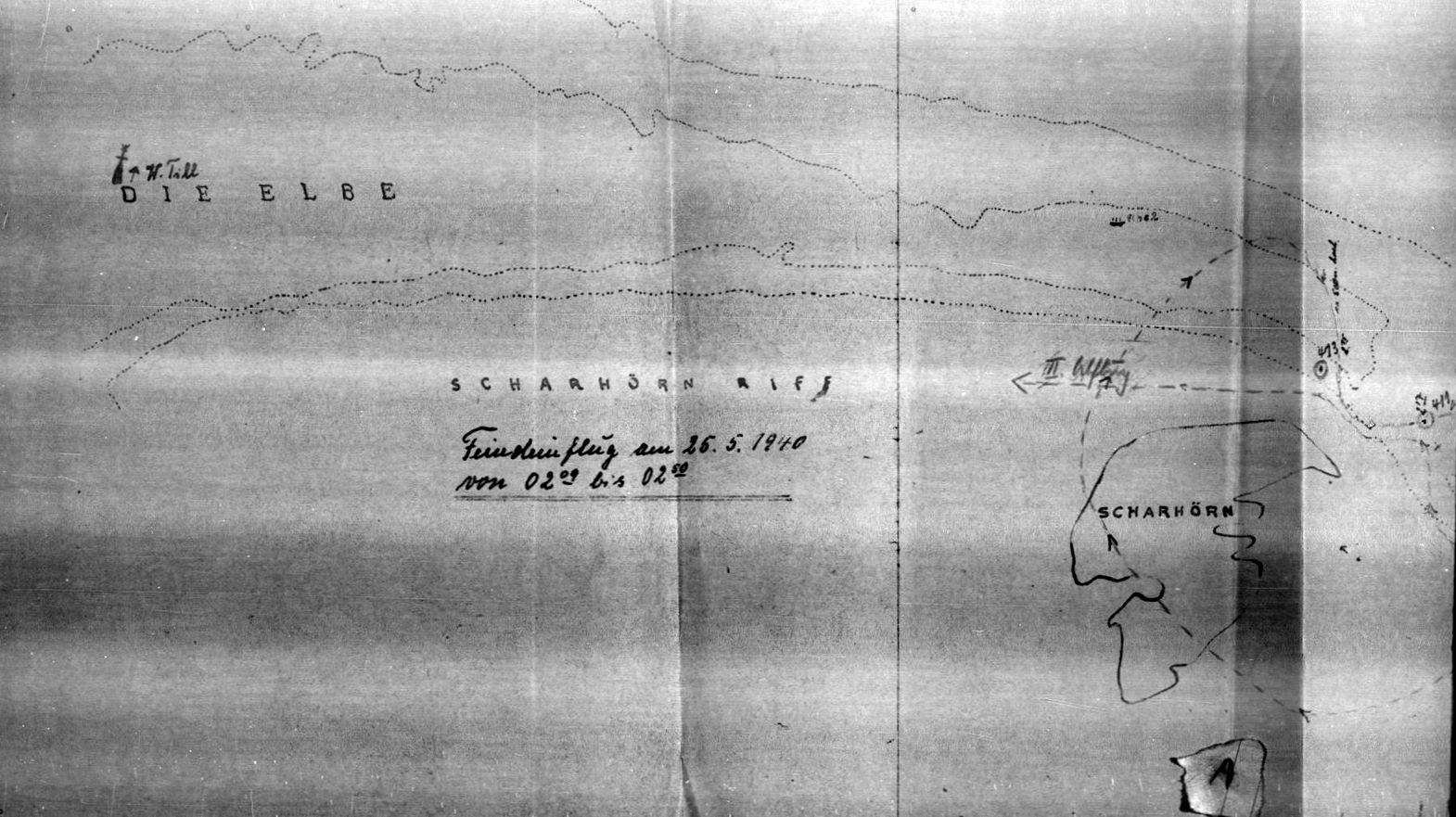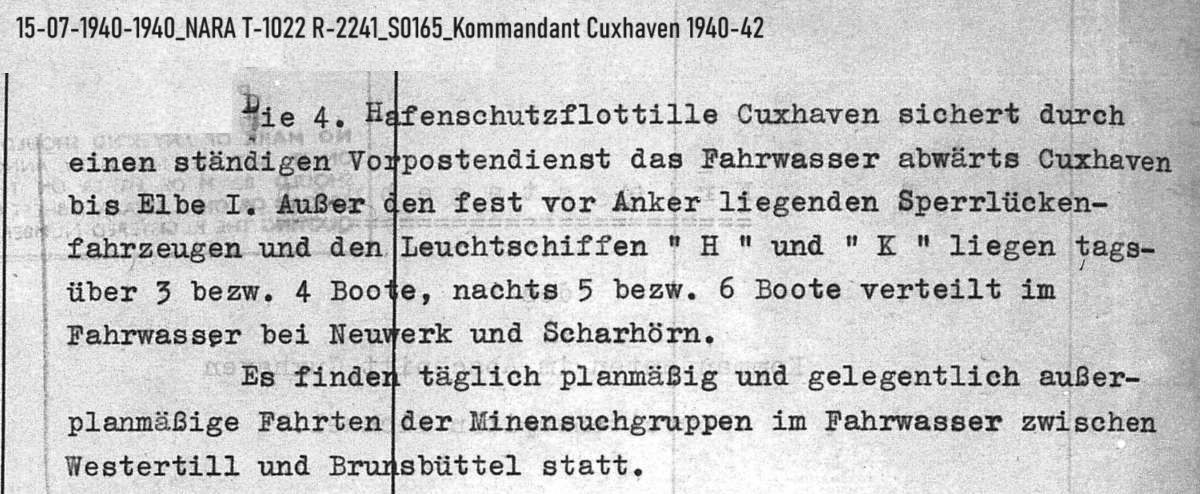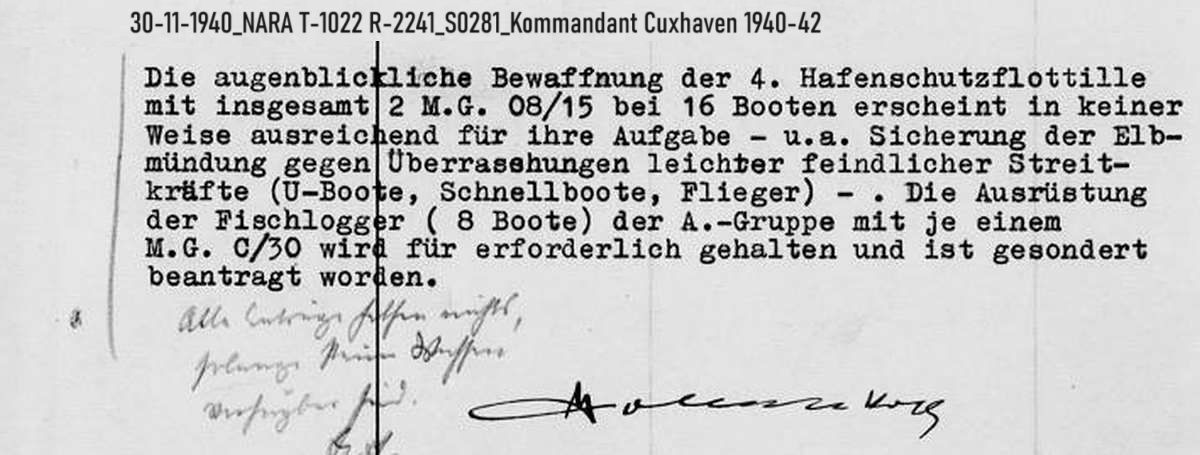
To protect port facilities and the waters offshore, so-called port protection flotillas were set up during the war years. These small fleets, which were often not made up of conventional warships, usually consisted of converted fishing vessels of various designs, smaller merchant ships or harbor tugs. The fleet of the 4./HFS. consisted mainly of fishing loggers and cutters, which were brought together from Bremen-Vegesack, Hamburg-Finckenwerder, Büsum and Leer. The Hamburg fishing steamer 'Schievenhorst' served as the flotilla commander's lead boat. These vessels were usually equipped with light anti-aircraft guns and small on-board weapons in order to be able to defend themselves against possible attacks. Due to their design, their speed was therefore not particularly fast. Their task was air defense against mine-laying aircraft on the water, control of the torpedo and submarine barrier, and rescue of downed aircraft crews. The boats were also able to carry out mine clearance operations, which increasingly became their main task. Almost every day, the flotilla's vessels were busy clearing the fairway and the tributaries of the Elbe of various types of blocking weapons. The boats of the 4th/HFS were also deployed on the Weser, the southern Heligoland Bay and the North Frisian coast as far as Esbjerg/DK. Their service was therefore not without danger, as they were easy targets for low-flying aircraft that regularly appeared or direct hits from mines. The former building of the Cuxhaven seaside resort station served as their quarters at the time.
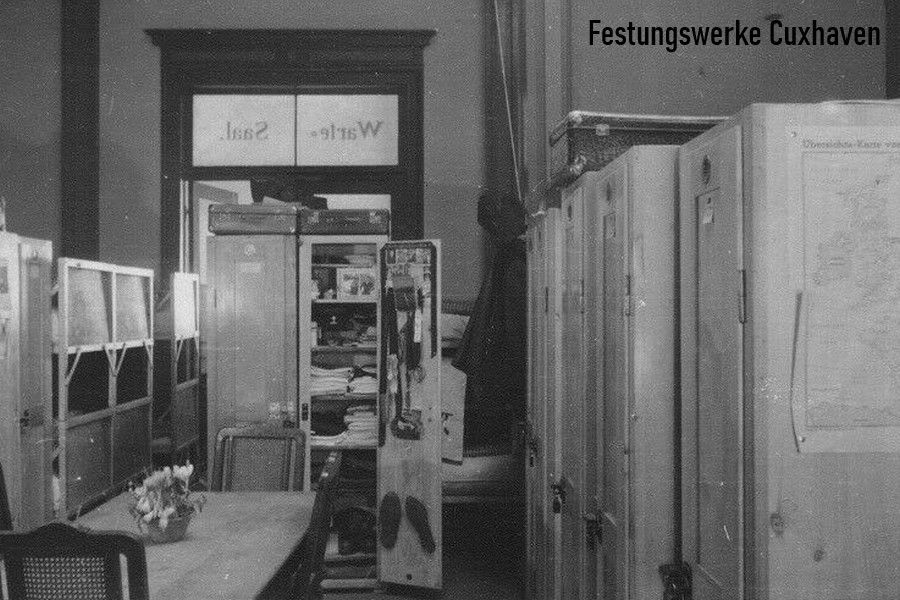
View into the waiting room of the seaside resort station, which was converted into the living quarters of the 4th/HFS. Source: NN
Commanders of the 4th Harbour Protection Flotilla
Lieutenant Commander of the Reserve Johann Biermanns (01 Sep. 1939 -14 Feb. 1941) Lieutenant Commander of the Reserve Dr.med. Friedrich Wilhelm Staelin (15 Feb. 1941- 02 Apr. 1943) Lieutenant Commander Robert Wegener (03 Apr. 1943 - 08 May 1945)Source: https://www.axishistory.com/axis-nations/6572-hafenschutzflottille-cuxhaven

Flotilla staff of the 4th/HFS-Cuxhaven 1939, third from the right probably KKder Reserv. Johann BiermannsSource: NN
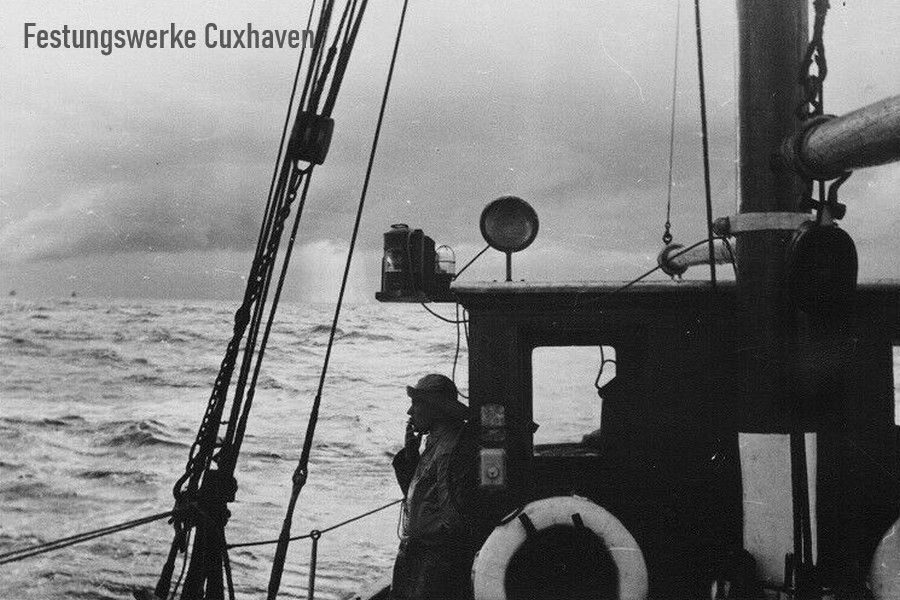
A war cutter on the Lower Elbe.Source: NN

A harbor patrol boat on an inspection trip. In the middle are two packed machine guns on tripods. Source: Gustav Hoffmann
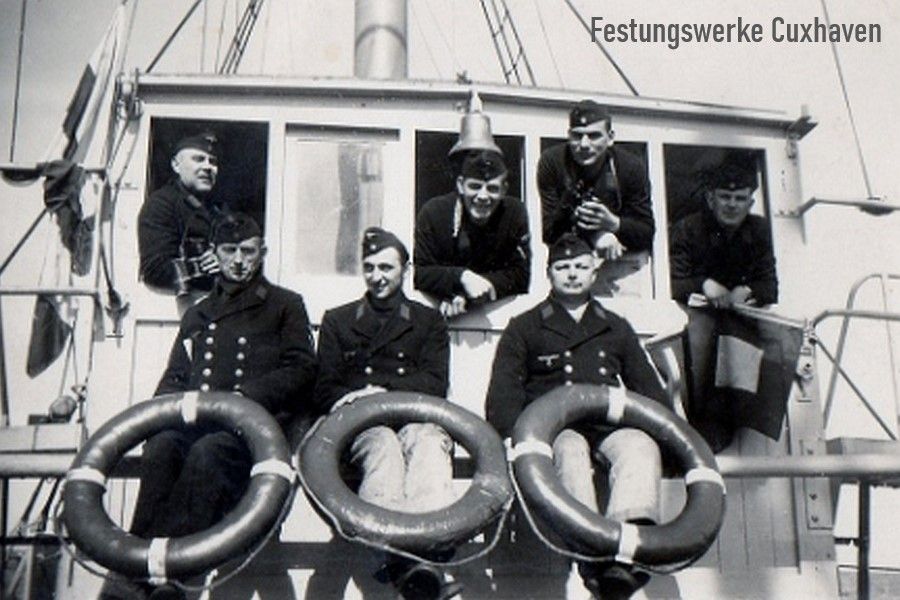
Die Gelassenheit trübt, in der Regel
waren die meisten Besatzungsmitglieder angespannt. Stetig bestand die Gefahr eines Minentreffers oder Luftangriffs.
Quelle: Gustav Hoffmann (ehem.Angehöriger der 4./ HSF.)

HSB returning home. - Cuxhaven outer port, winter 1939/40.Source: NN
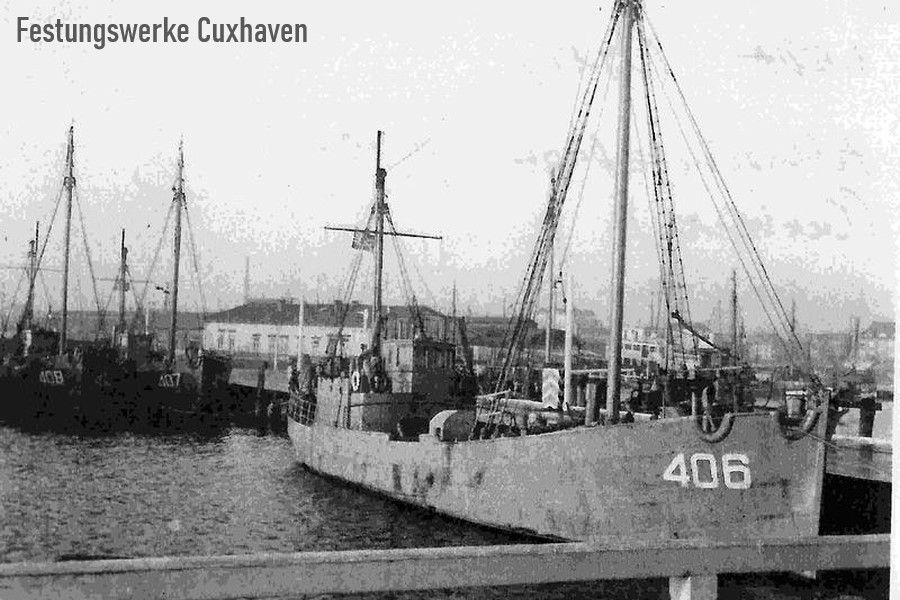
The harbor patrol boats 406 'Leda', 407 'Gertrud' and 408 'Sperber' at the Helgoland quay. In the background the quarters building.Source: Dieter Kokot
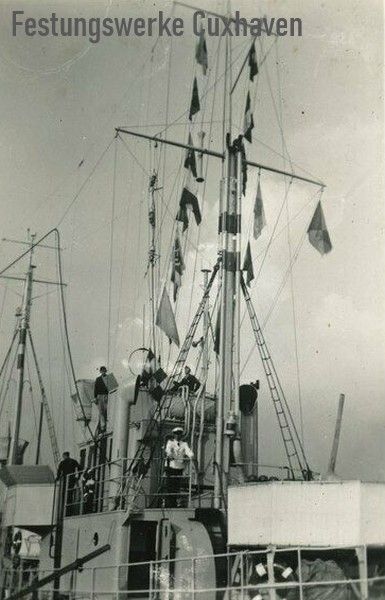
Über die Toppen geflaggt.
Quelle: N.N.
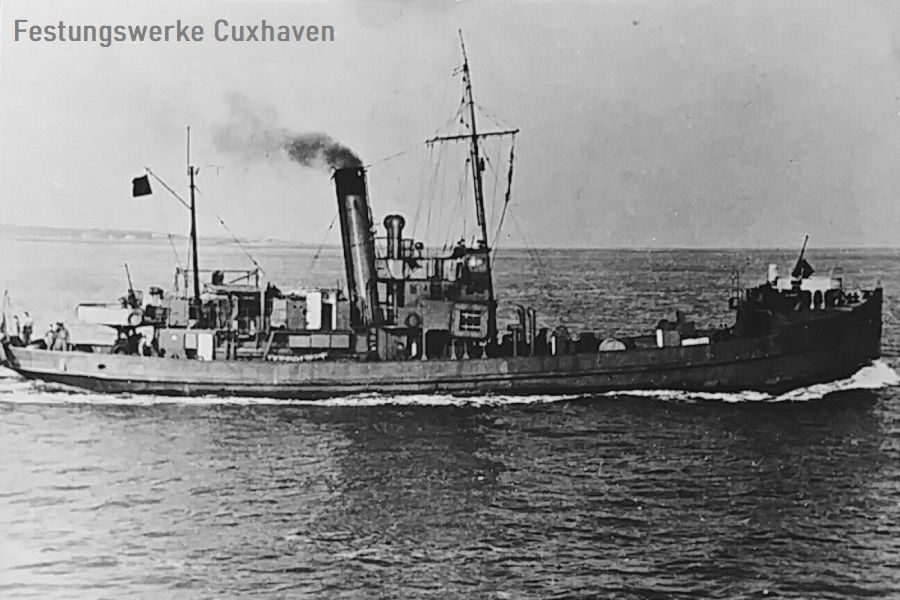
Harbor protection boat 430 (DC 40) - 'Sigfried' around 1943Source: NN
In 1920, the politically controlled implementation of the "standardization of the vessels of the German fishing fleet" began. Initially, the ships were made of wood and called Reichsfischkutter, while the Kriegsfischkutter was made of steel. Both models could be ordered by private operators together with a favorable Reich loan. In return, the vehicle had to be handed over to the Navy during the war.
The use of armed fishing boats and trawlers in war was common practice. The crews of the previously civilian units were drafted into military service. The ships were then equipped with additional weapons, mostly light anti-aircraft guns. They were used for mine-laying, security, air defense and much more.
Vehicles of the 4th Harbor Protection Flotilla (found so far)
"Die Liste erhebt keinen Anspruch auf Vollständigkeit. Mein Dank beim Zusammenstellen der Daten gilt Falko Domris, dessen Großvater Gustav Hoffmann von 1941 bis 1943 seinen Dienst bei der 4. Hafenschutzflottille als Signalgast versah."
| War identification | Civil identification | Name | Art | shipyard | Whereabouts | |
|---|---|---|---|---|---|---|
| SC 18 | Fishing boat | 1920 | Störwerft Wewelsfleth | Restored in 1991, privately owned since 2009 | ||
| DC 34 H441 | 103 | Passarge | Fishing boat | 1936 | Tönning, R. Harnack | Scrapped in 1971 |
| DC 35 H443 | SC 11 | Tierra del Fuego I | Fishing boat | 1917 | 23.07.41 sunk, mine, later raised | |
| DC 36 H445 | SECTION 37 | North Frisia | Fishing boat | 1937 | F. Dawartz, Tönning | after the war for DGzRS |
| DC 37 H417 | BV 85 | Rhineland | 1938 | Berninghaus, Köln | ||
| DC 38 KFK115 | KRD 440 | Schlei (ex.Weser) | Lifeboat | 1941 | A. Pahl, Hamburg-Finkenwerder | until 1958 for DGzRS |
| DC 39 | The White Raven | R. van Veen, Rotterdam | ||||
| DC 40 H430 | Esteburg HH 69 | Sigfrid | Fishing steamer | 1917 | ||
| Simson | ||||||
| DC 42 H432 | HH 256 | Ream | Fishing steamer | 1940 | Norderwerft Hamburg | Scrapped in 1985 |
| DC 42 | ex. Eschwege | Schievenhorst | Fishing steamer | 1920 | HC Stülcken Son Hamburg | 25.03.1945 sunk, scrapped in 1952 |
| DC 43 H433 | Altenbruch | Altenbruch | Pilot steamer | 1927 | Norderwerft Hamburg | 21.02.1945 sunk, mine |
| H434 | Diver Otto Wulf III | Motor tractor | 1940 | Otto Wulf GmbH & Co.KG, Cuxhaven | ||
| DC 44 H435 | Guepe 62 | |||||
| DC 45 H436 | BV 67 | Tomb | 1933 | J. Frerichs, Einswarden | Scrapped in 1962 | |
| DC 45 | ||||||
| DC 46 | HC 66 Senator Holthusen | Bollermann | Fishing steamer | 1916 | Unterweser shipyard Lehe | Scrapped in 1951 |
| DC 47 | N. Ebeling | Frithjof | Fishing steamer | 1915 | ||
| DC 50 H406 | AL 12 | Lead | 1908 | C. Classens, Emden | ||
| DC 51 H407 | AL 16 | 1922 | Schulte and Bruns, Emden | Scrapped in 1965 | ||
| DC 52 H423 | BUT 92 | Ursula | motorlogger | 1916 | C. Lühring, Brake | Scrapped in 1962 |
| DC 53 | Taube | Fishing boat | 1911 | Scrapped in 1964 | ||
| DC 54 | Viking | |||||
| H453 | Gretchen | 1938 | Nobiskrug, Rendsburg | 14.04.1941 sunk, collision | ||
| DC 56 | War cutter | 1945 | Burmester KG, Swinoujscie | not completed | ||
| DC 57 | War cutter | 1945 | Burmester KG, Swinoujscie | not completed | ||
| DC 58 | War cutter | 1945 | Burmester KG, Swinoujscie | not completed |



